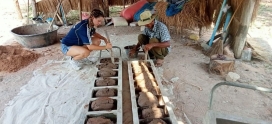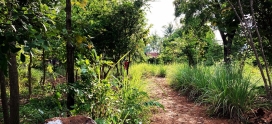Week 1 in Myanmar – Introduction
In a bus station sweating profusely, drinking excellent Myanmar beer having survived the first week, eaten every local street food that looks edible and suffered the consequences and now about to start on a 10-hour overnight bus journey to Bagan, home of the temples. Now I have been and worked in many places but this is a reminder to anyone who reads this, health care professional or patient, how fortunate we all are in the West.
So why am I here? Having had my farewell speeches from North Manchester after I think 27 years of loyal Consultant service I have picked up my stethoscope and now work for a medical charity called Green Shoots Foundation whose mission includes providing staff and resources to educate and assist in HIV care. I work under the umbrella of Medical Action Myanmar (MAM) who run several clinics in Myanmar, four in Yangon, and an expansive project of outreach care around the country.
So, what’s it like? They say it’s going to hit 40C this week so obviously, it’s very hot and top strength sun-block is a must. After only a day working in the clinics you begin to understand the intense pressures that the staff work under. Attached is a picture of one of the clinics that run in the outskirts of Yangon. There are over 4000 HIV patients and 500 children with HIV being cared for in this clinic alone and around 7,500 in all four clinics in Yangon: the local Burmese doctors who staff these clinics work their socks off.
Here’s what I can tell you so far. For those doctors who read this, imagine a clinic where most patient have weights <45kg, CD4 counts <100 and there are very limited diagnostic facilities. No baseline viral load, no resistance test, just a CD4 count. You can have a Hb, malaria film, CRAG, AFB smear, HBV/HCV card test, and STS done in the clinic. Everything else must be sent away including XpertTB test (with rifampicin resistance), CD4, CSF’s, and biochemistry. You do not come in to work, log onto a computer, and access the wealth of information available as back home: most tests cost money and except for USS not available (reports questionable). CXR’s are available at a nearby hospital but not of the best quality. For those with a CD4 count <100 you can get a LAM urine test for TB diagnosis. So, most patients have TB (some MDRTB and XDRTB) but with their HIV yet half the patients are going to be smear/XpertTB negative so trying to pick out the lymphoma, PCP, lung Ca, pneumonia, or even sarcoidosis is incredibly difficult and many patients go onto empirical TB therapy – and then get drug-induced hepatitis! Other common HIV OI’s include cryptococcal meningitis, penicilliosis, and CMV retinitis – all of which have come into the day centre in the last week. So, I now understand how the clinics work, a necessity before you can try and help by using your experience and what skills you have. We will see what happens next.
Till next week
Ed




